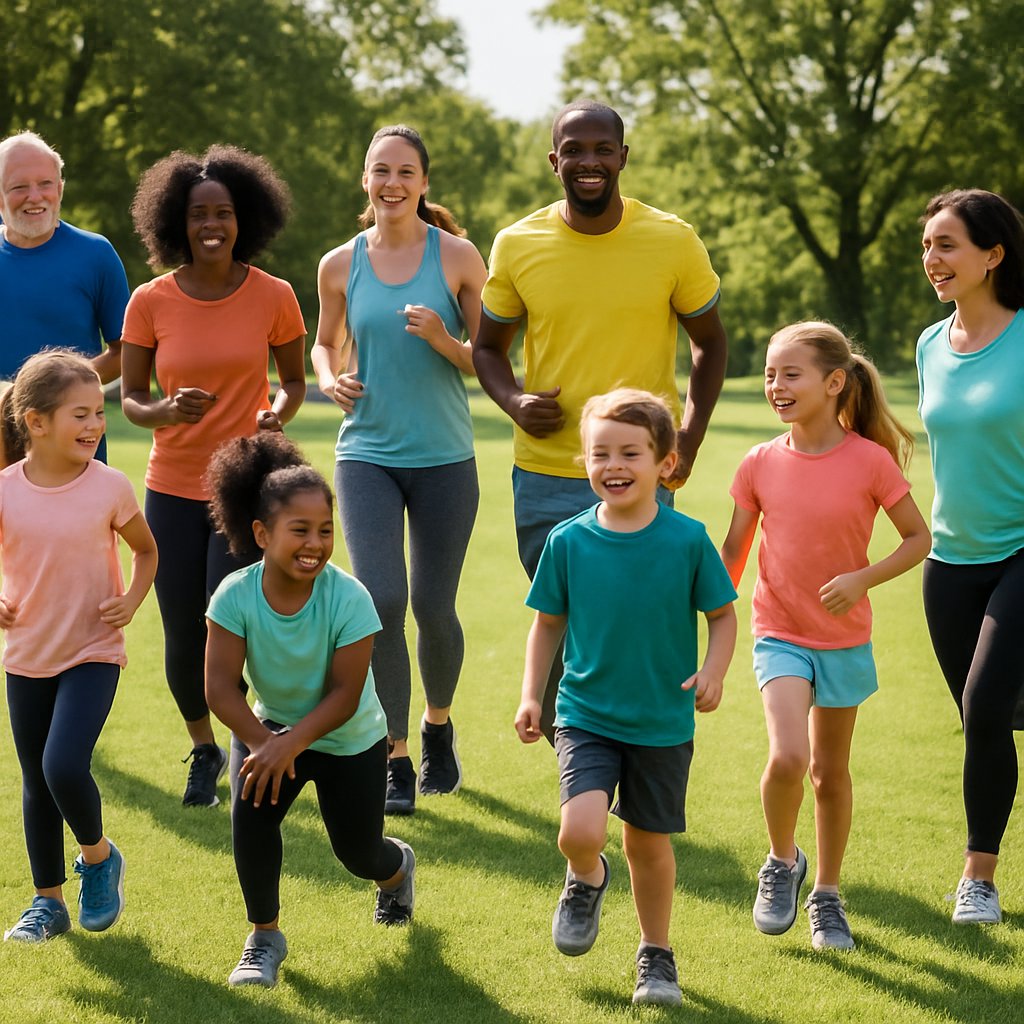Physical fitness is the ability of your body to perform daily activities efficiently, with enough energy left for leisure, emergencies, and to help prevent disease. It means having a strong heart, healthy muscles, flexible joints, and a good balance of body fat and muscle. Understanding physical fitness is important because it helps you stay active, lowers your risk of illness, and improves your overall quality of life.
If you want to know what physical fitness really means, you’re in the right place. This guide explains the simple definition, the five main components, key benefits, and how you can start improving your fitness—no gym required.

For the most current guidelines, see the CDC’s Physical Activity Basics and the World Health Organization’s official page.
What Is Physical Fitness? (Simple Definition)
Physical fitness is your body’s ability to do everyday tasks with strength, energy, and alertness—while also being able to handle unexpected physical challenges. This means you can work, play, and live your life without feeling overly tired or stressed.
Physical fitness is measured by several key factors, including your heart health, muscle strength, endurance, flexibility, and body composition (your ratio of fat to muscle).
- Physical fitness = being able to do daily activities easily and stay healthy.
- Anyone can improve their fitness by staying active—no athletic background needed!
The Five Main Components of Physical Fitness
Modern health experts break down physical fitness into five key areas. Each part is important for your overall health.
1. Cardiovascular Endurance
This is how well your heart and lungs supply oxygen to your body during activities like running, swimming, or brisk walking.
Why it matters: Better endurance means you can move longer without getting tired.
How to improve: Try walking, jogging, biking, or any activity that raises your heart rate.
2. Muscular Strength
Muscular strength is the amount of force your muscles can produce—think lifting, pushing, or carrying heavy things.
Why it matters: More strength makes daily tasks, like carrying groceries, much easier.
How to improve: Do push-ups, lift weights, or use resistance bands.
3. Muscular Endurance
Muscular endurance is how long your muscles can keep working without getting tired—like doing multiple sit-ups or holding a plank.
Why it matters: Good endurance helps you keep moving, playing, or working without needing frequent breaks.
How to improve: Try bodyweight exercises (e.g., squats, lunges), cycling, or swimming.
4. Flexibility
Flexibility is the range of motion of your joints and muscles.
Why it matters: Flexible joints help prevent injury and allow you to move comfortably.
How to improve: Stretch daily or practice yoga.
5. Body Composition
This refers to the balance of fat and muscle in your body.
Why it matters: Healthy body composition lowers your risk of heart disease, diabetes, and other health issues.
How to improve: Combine regular exercise with balanced nutrition.
Learn more from the CDC’s Components of Fitness page.
Why Is Physical Fitness Important?
Maintaining physical fitness is about much more than just looking good. Here’s why it matters for everyone:
- Reduces risk of chronic diseases: Exercise lowers your chance of heart disease, type 2 diabetes, and some cancers (WHO, 2024).
- Boosts mental health: Being active helps manage stress, anxiety, and depression (Mayo Clinic).
- Supports healthy weight: Physical activity helps you maintain or reach a healthy body weight.
- Strengthens muscles and bones: Regular movement improves your strength and balance, protecting you as you age.
- Improves sleep and energy: Exercise leads to better sleep and higher energy during the day.
How Much Exercise Do You Need?
According to the latest guidelines from the Centers for Disease Control and Prevention (CDC) and the World Health Organization (WHO):
- Adults:
- At least 150–300 minutes of moderate-intensity exercise (like brisk walking) per week
- Or 75–150 minutes of vigorous activity (like running) per week
- Muscle-strengthening activities at least 2 days per week
- Children & Teens:
- At least 60 minutes of physical activity daily
Even small amounts of exercise provide health benefits. Start with what you can manage and build up gradually.
Simple Ways to Improve Physical Fitness (No Gym Needed)
- Walk more: Take the stairs, park farther away, or do a daily walk.
- Use bodyweight exercises: Push-ups, squats, lunges, and planks all help.
- Try fun activities: Dance, play sports, or join an exercise class.
- Stretch every day: Flexibility keeps you limber and reduces injury risk.
- Eat well: Choose a balanced diet with plenty of vegetables, lean protein, and healthy fats.
- Get enough sleep: Recovery is just as important as exercise.
Common Questions About Physical Fitness
Q: Can I be physically fit without going to the gym?
A: Yes! Daily activities like walking, gardening, or playing with kids all help improve fitness.
Q: How fast will I see results?
A: You may notice more energy within a few days; big changes (like increased strength or weight loss) usually take several weeks.
Q: What if I have a health condition?
A: Always check with your doctor before starting a new fitness routine, especially if you have heart, lung, or joint issues.
Conclusion: Take the First Step Toward Fitness
Physical fitness is simply your ability to do everyday tasks easily and stay healthy. Anyone can improve their fitness, no matter their age or background. Start small, move daily, and focus on all five fitness components for the best results.
Ready to take control of your health? Explore more at the CDC Physical Activity page, and make today the start of your fitness journey!
